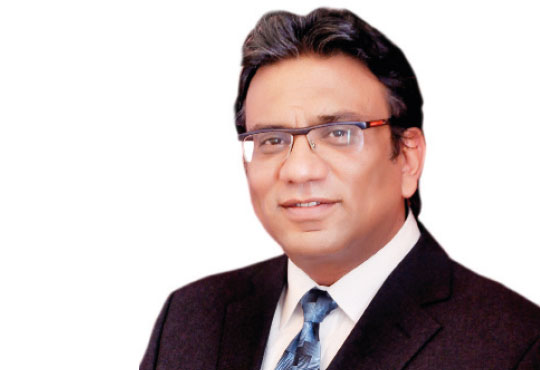
Raritan, after the acquisition by Legrand plans to build an integrated data centre team, LDCS, says Sanjay Motwani, Vice President, Asia Pacific, Raritan. In this interview with Elets New Network (ENN), Motwani shares his vision for the company and why it is important to build uniform brand value from the perspective of customers.
How has been the journey of Raritan over the years?
I will start from the beginning because it is important to get the context right. Raritan has been associated with data centres from 30 years and that’s how we started off. We introduced the product at that point of time called KVM – Keyboard, Video and Mouse. At that point of time we did not have mouse but later on it was added and mouse came in the picture. That’s how it started. What it does basically is it allows data centre people to manage their infrastructure remotely. It is very basic, fundamental, that’s what the job of a KVM.
It is important for the data centre managers to manage their infrastructure effectively. That’s the platform and the thought process with which Raritan comes.
Over the last decade and a half ago, we realised that IT equipments, especially the servers, are becoming more intelligent. So the remote management tools and capabilities were built enabled equipment itself. We looked at another category. Since we are coming from the data centre background, we said how best we can help the data centre people more.
That is when we launched the product called Intelligent PDU, which is a power distribution unit that provides basic power to the IT equipments from the data centre. Till such point it was only basic functionality like in households we see small power distribution vault – multi-socket point. That is how it’s operating.
We created intelligence into that. The first thing what we did was, we created IP connectivity which means you can manage it remotely. Then we started measuring power at the each device. The objective was – if the data centre people could understand how their equipment was behaving they could take proactive decisions in managing their infrastructure better. And that has evolved over the years.
Over the past few years, the issues of going to cloud, issues of security, and issues of IoT have come into play.
What have been your ways to deal with these issues?
We have provided security tools, environment measurement tools in the data centre but using the basic PADU as a platform or the basis. For example, in the security sight we have automated security door locks, so you are aware that at a data centre you have racks. To go inside a rack you need a handle. So that lock handle has been automated to an extent that if you want you can control it remotely against biometrics or whatever the protocols you want to control. The built-in security, environmental monitoring has come into play in a data centre. The operating expenditure of a data centre is very large. So if you can understand where we are spending extra, where there is extra capacity, then you can optimise. The thrust of Raritan has been to help the data centre managers understand the data centre better in the infrastructure sight.
What are your plans for the upcoming years?
There are two parts to the data centre. We call the IT equipment room as the white room and the other one is the technical room. Raritan helps identify data centre managers where the excess capacity is. If you can realise where the excess capacity is, then you can optimise and bring down your operating cost. Even if you want to expand tomorrow you don’t have to look for space you can find the space within your existing infrastructure and utilise it.
Raritan is now a part of Legrand, which has also been in the data centre products for the past four to five years. The plan is to form unified data centre team. Right now we have four or five teams, going to the customers, the same customers from the Legrand. So from the customers point of view, he is dealing with four or five different people from the same company so it is little irritating to the customers. That’s why we want if we can integrate our teams, also we want to integrate our solution offerings. We can offer a better consolidated proposal to the end customers. This is what we are trying to work on.
A month ago, we acquired another company called Universal Electrical. So moving forward all this products and solution offerings will get integrated for the market.
How do you plan to integrate the teams of Legrand, Raritan and Numeric?
We plan to call the new team as LDCS – the Legrand Data Centre Solutions.
The other brands will continue. It’s only the interaction with the customer would be called LDCS because each of these brands has a specific strength in the product category. The focus would be to build a new brand from the scratch and to prove its potential. LDCS will offer the products and solutions from Numeric, Raritan, Starline and others. That’s going to be the front face and at the backend for product category of this kind you would have a qualified sales team and very good technical support team because in data centre being a technical space you need technical expertise and skill-set. We will pick people from each of these companies, identify the people, and make a consolidated team. And then offer a unified offering to the customer.
When will LDCS launch in India?
Right now background work is going on. We plan to launch LDCS by next year. In fact it will happen as early as at the end of this year. We will be ready with the formal announcement by next year.
What will happen to the existing migrations?
Everything migrates to this new entity. LDCS will not be a separate legal entity. So as far as obligations to our customers are concerned they will continue to hold on with the individual entities. It’s just that the dialogue will happen with LDCS. All obligations and commitments which are there will continue to be on them irrespective. Even today when Legrand acquired Raritan none of our customers have faced any issue. There has been no change as far as the customer experience is concerned and even the channel community is concerned. So even channels won’t face any issue.
Will there be channel integration also?
Absolutely! Firstly the integration and consolidation will happen followed by the expansion. Which is why we are working this year to identify people , trying to get the integration and trying to get the training started, trying to get the people understand. So there’s no point going to the customer saying I am from LDCS team and I have no knowledge of Numeric’s products. Before we start engaging with the market, for that kind of communication and commitment we have to do this. That is what is happening this year.
If we look at verticals, how has been the status of deployment in the Indian context?
Raritan has been very strong in one vertical in which people normally don’t assume to be a strong vertical. The vertical is labs and the R&D. Nobody even looks at it and thinks so are. But they are the one of the biggest people and spenders on technology. For example, when you go to a data centre, Cisco has 15 labs and 15 R&D centers in India alone. Which company in India has 15 data centers? That’s how we look at it. Each of the data centers as they call it labs are not traditional data centers and has 1500 to 2000 racks. So that’s the scale with which they are. So we focus on R & D labs very extensively. We work with CISCO, Dell, Microsoft, pretty much all of them. So R&D, Labs are a very big vertical for us. The three big verticals are Finance, R&D and Telecom.





















